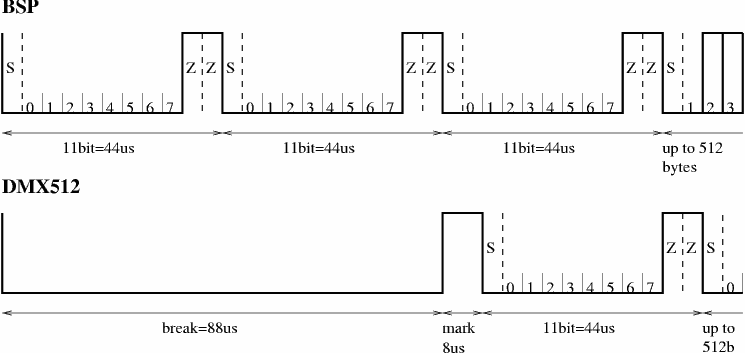Design and Evolution of Lighting Protocols
BSP
In the late 1970's Siemens was
producing the B40 product line. They featured a protocol
called Bit Serial Protocol (BSP) for transmission of data to
lighting devices.
Layer 0
BSP uses the standard serial transmission via rs422. (rs422
is roughly the same as rs485.) BSP is asynchronously clocked
with 250KBit. The Sender (Master) issues the clock rate via a clock
line. Transmission uses the 8N2 schema.
The connector has 5 pins assigned with symmetric clock, symmetric data and
ground. (+clock, -clock, +data, -data, gnd)
Layer 1
Transmission is divided into frames of up to 512 bytes. Valid data
bytes have values from 1-255. Value 0 is invalid and used to mark a
new Frame.
The frame layout is a follows:
- Frame Start indicated by 3x 0
- Up to 512 Bytes (value 1-255)
DMX512
To remind you, here is a quick summary of DMX512. Serial
transmission via rs485 with 250KBit with 8N2. Data organized in frames
with up to 512 bytes. A frame start is indicated with 88 μs break
(low) followed by 4 or 8 μs mark (high). Then a config byte follows
(normally 0) and up to 512 data bytes.
Comparison of BSP and DMX512

|

